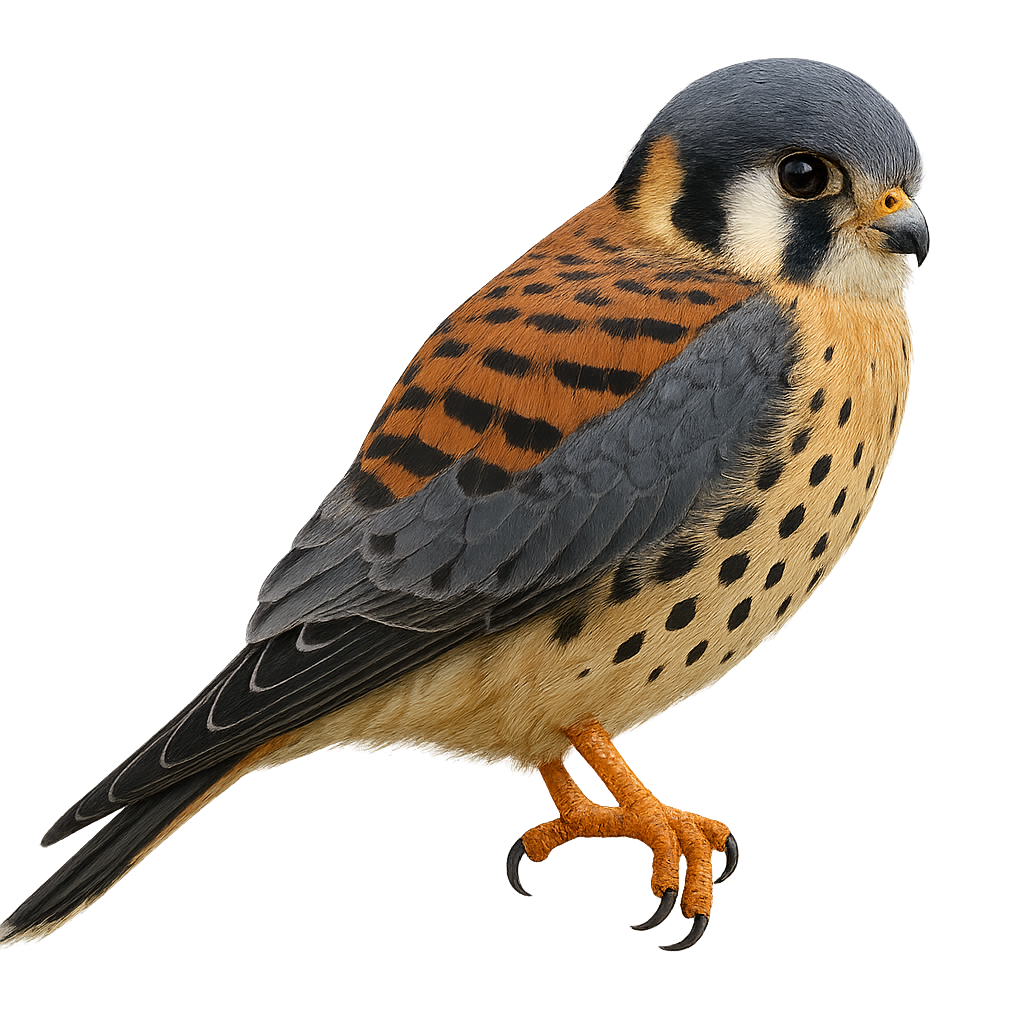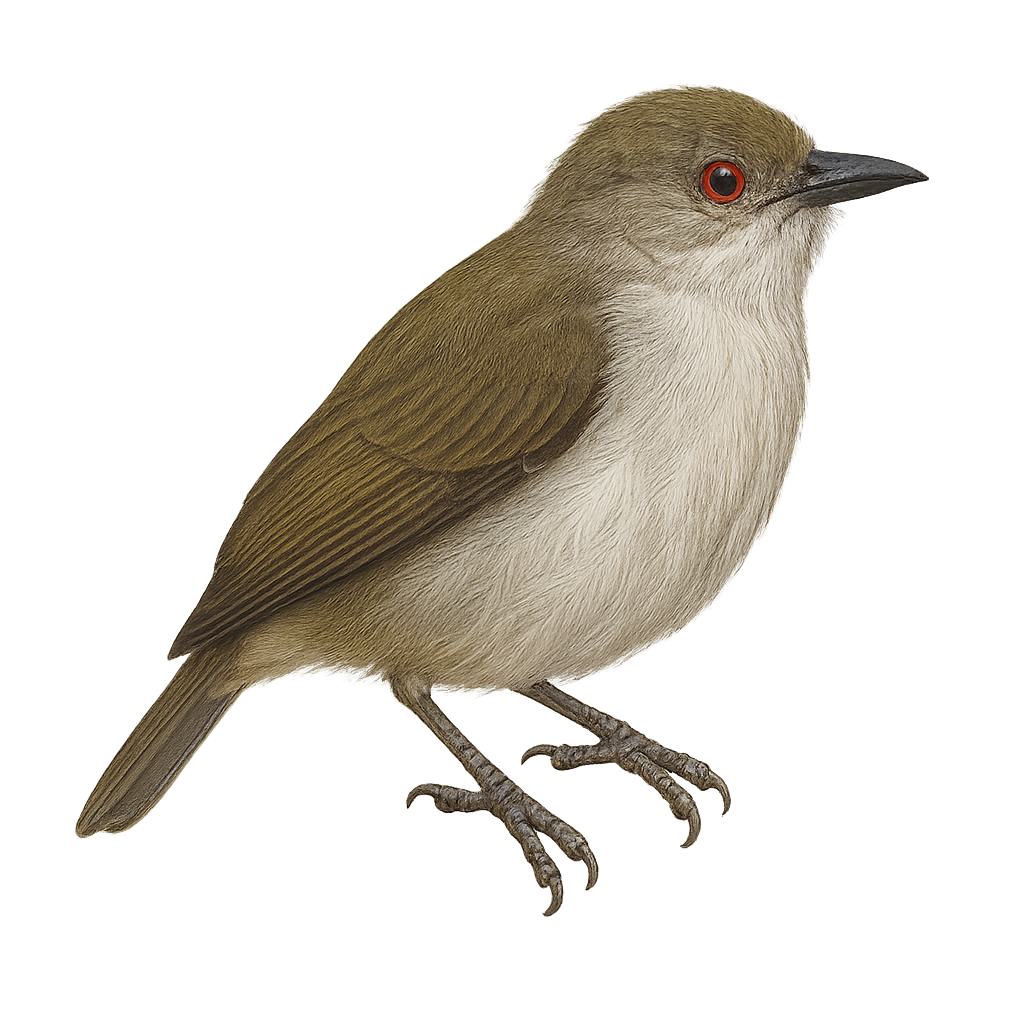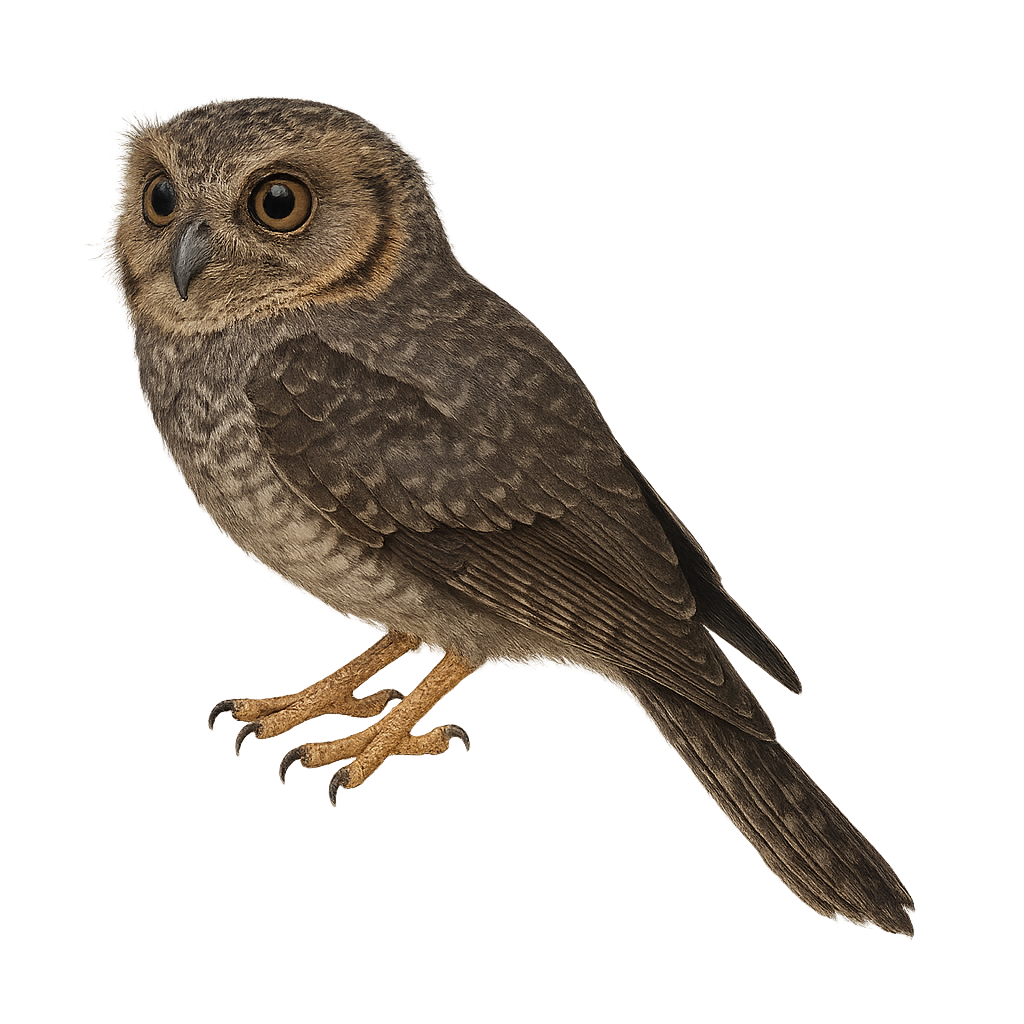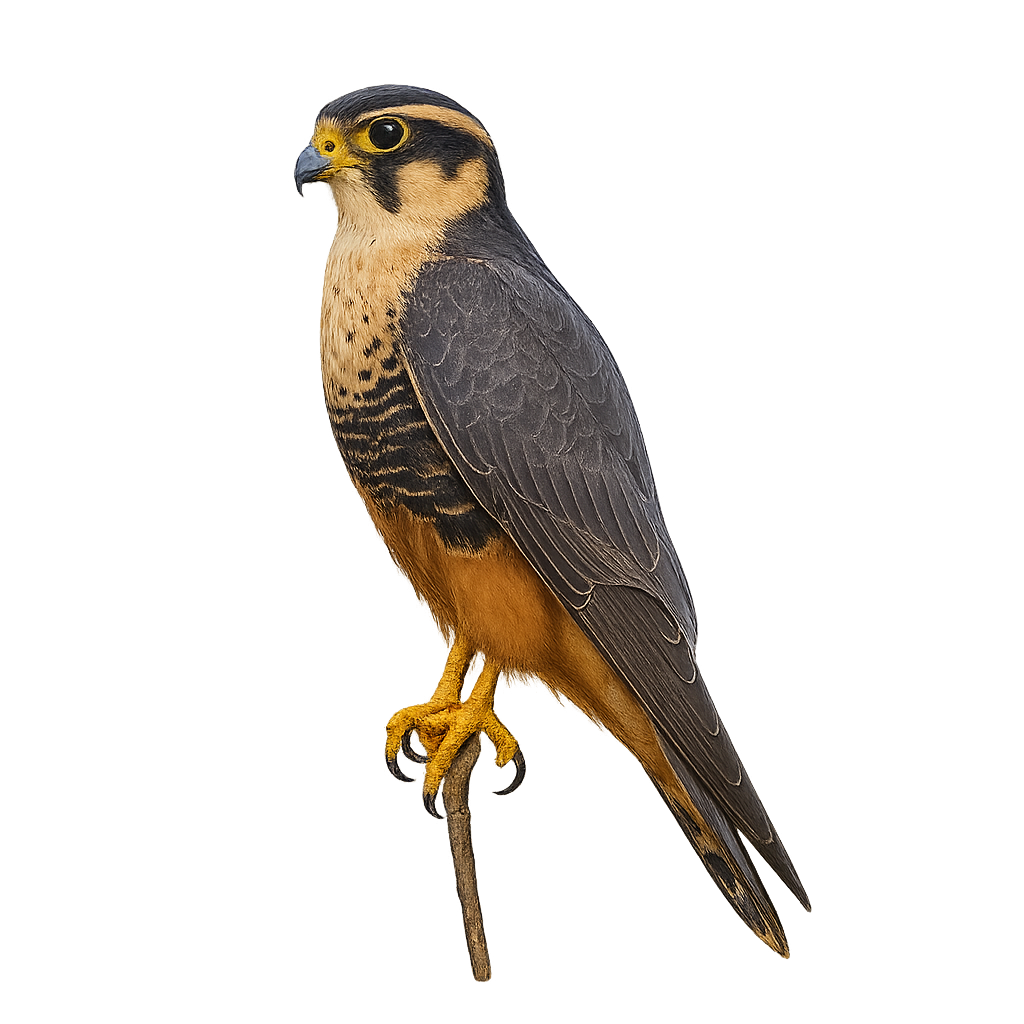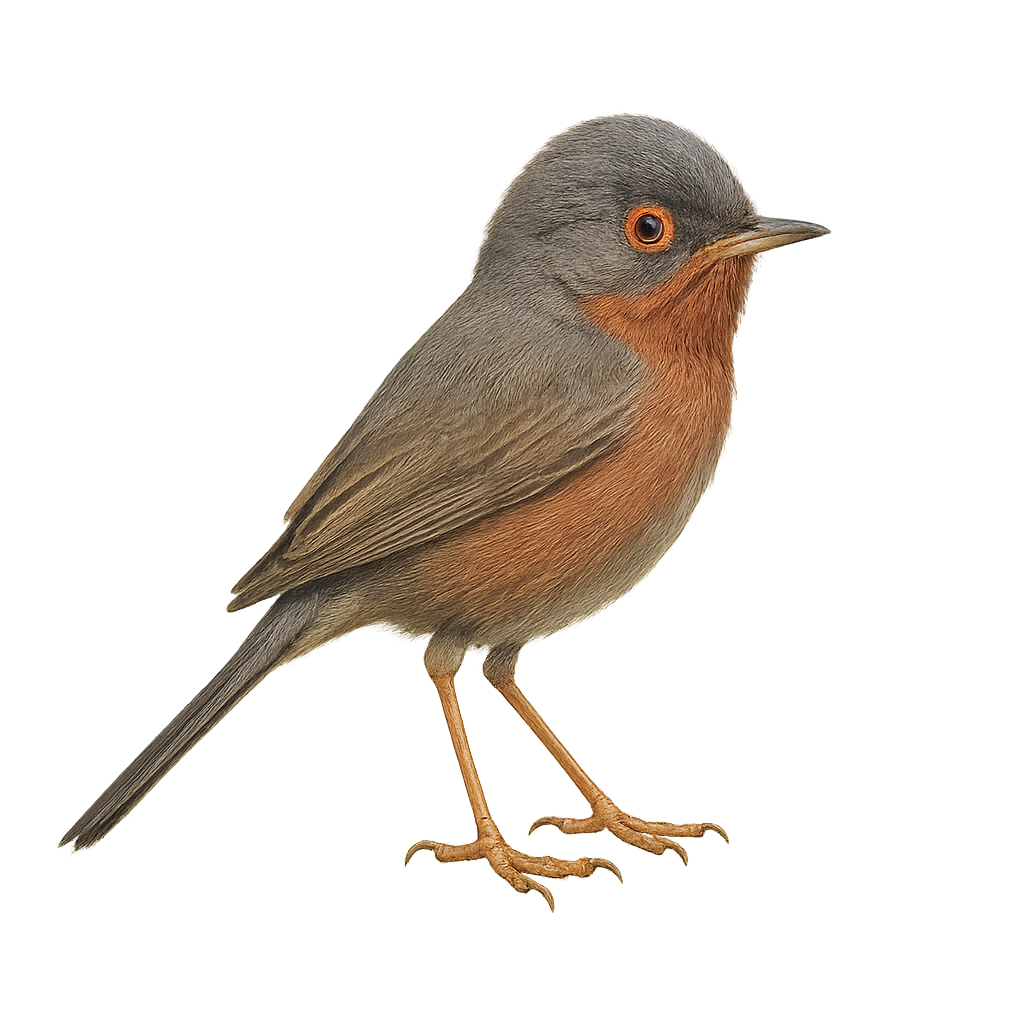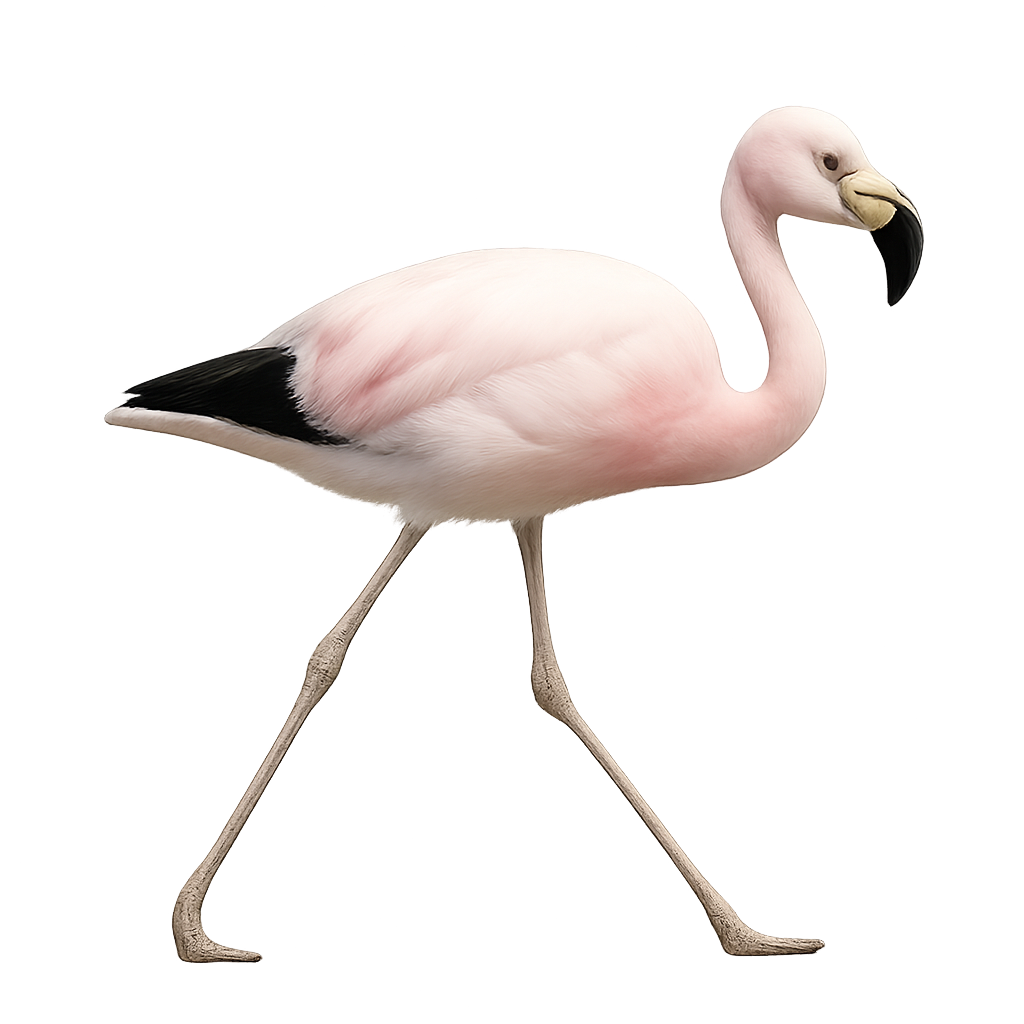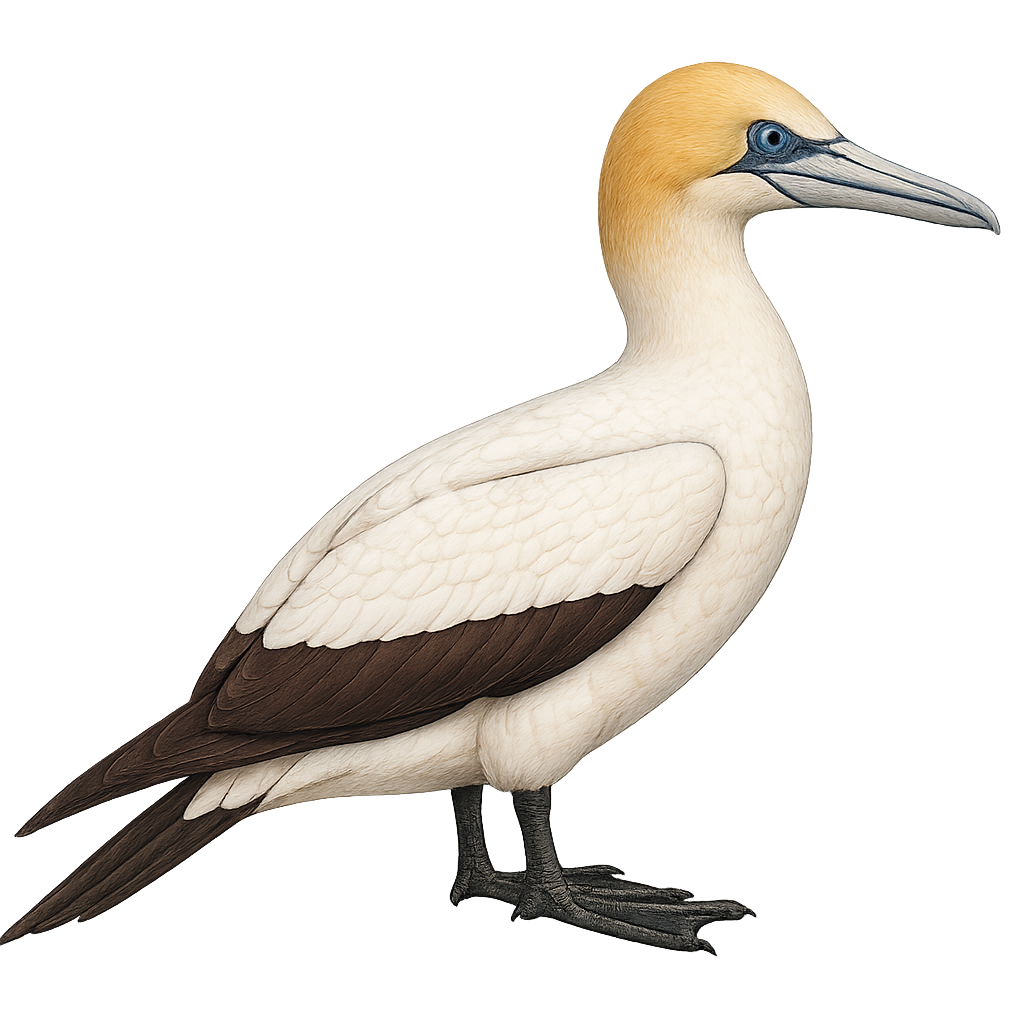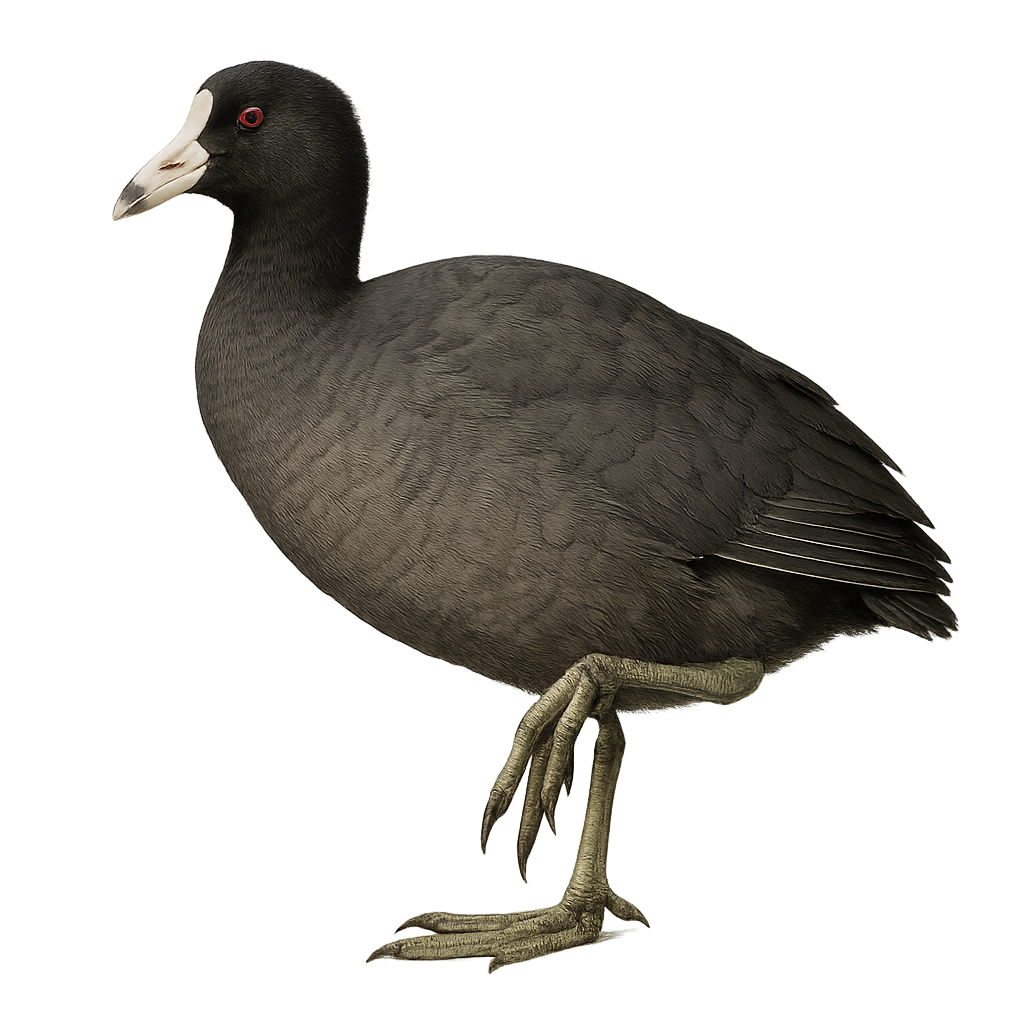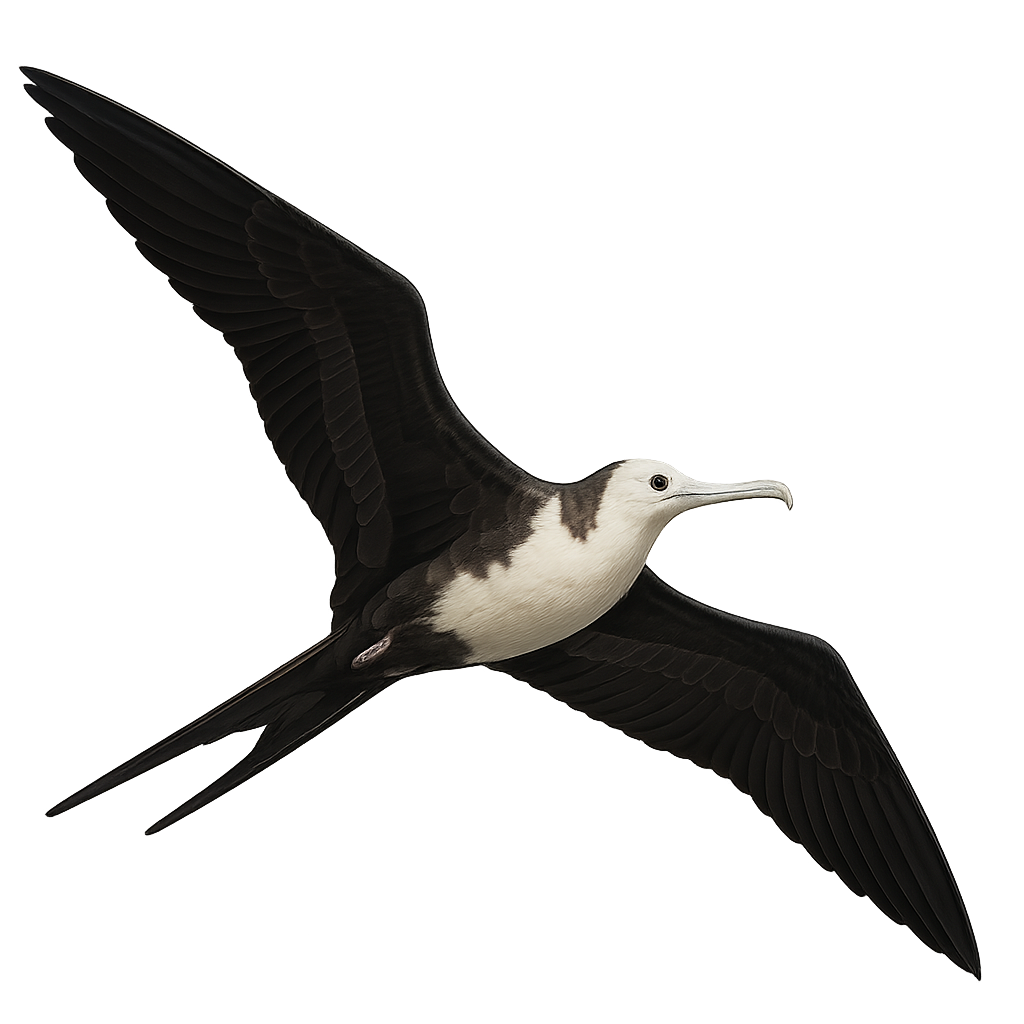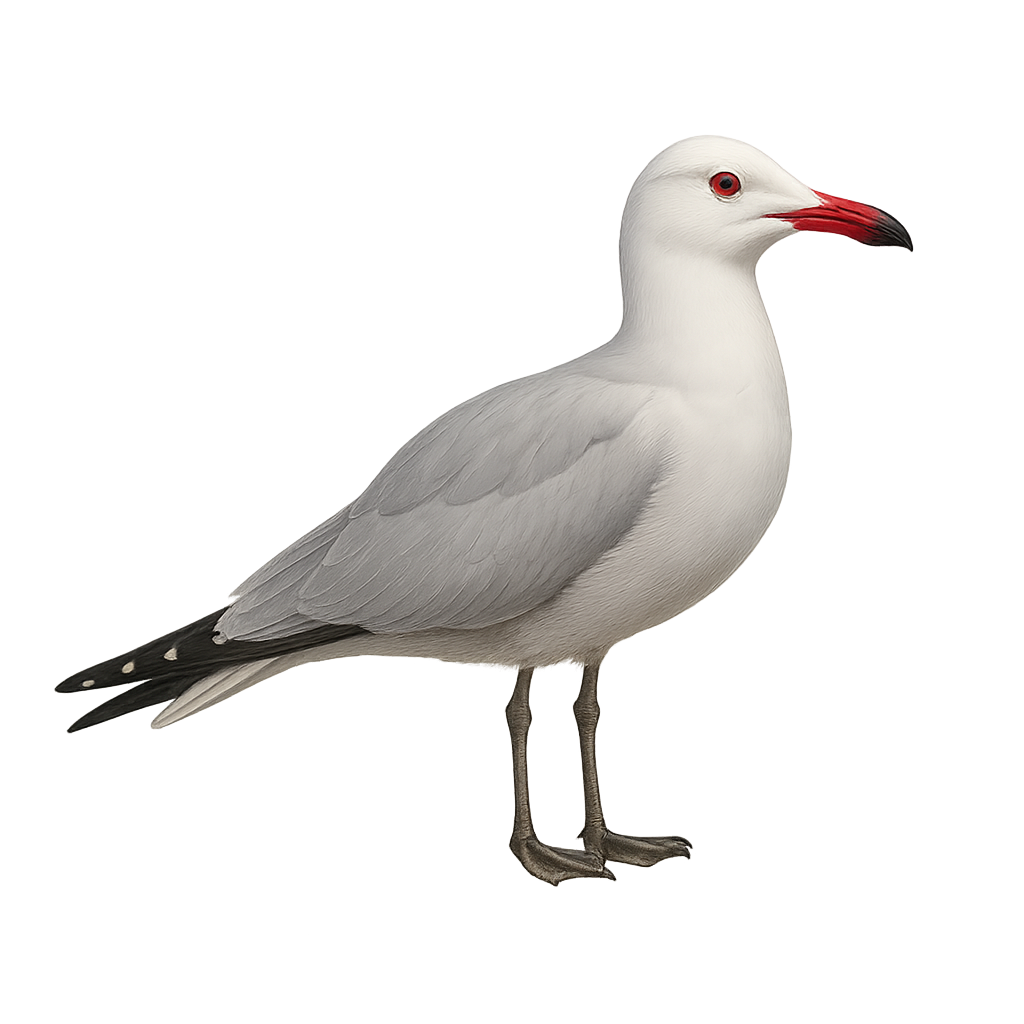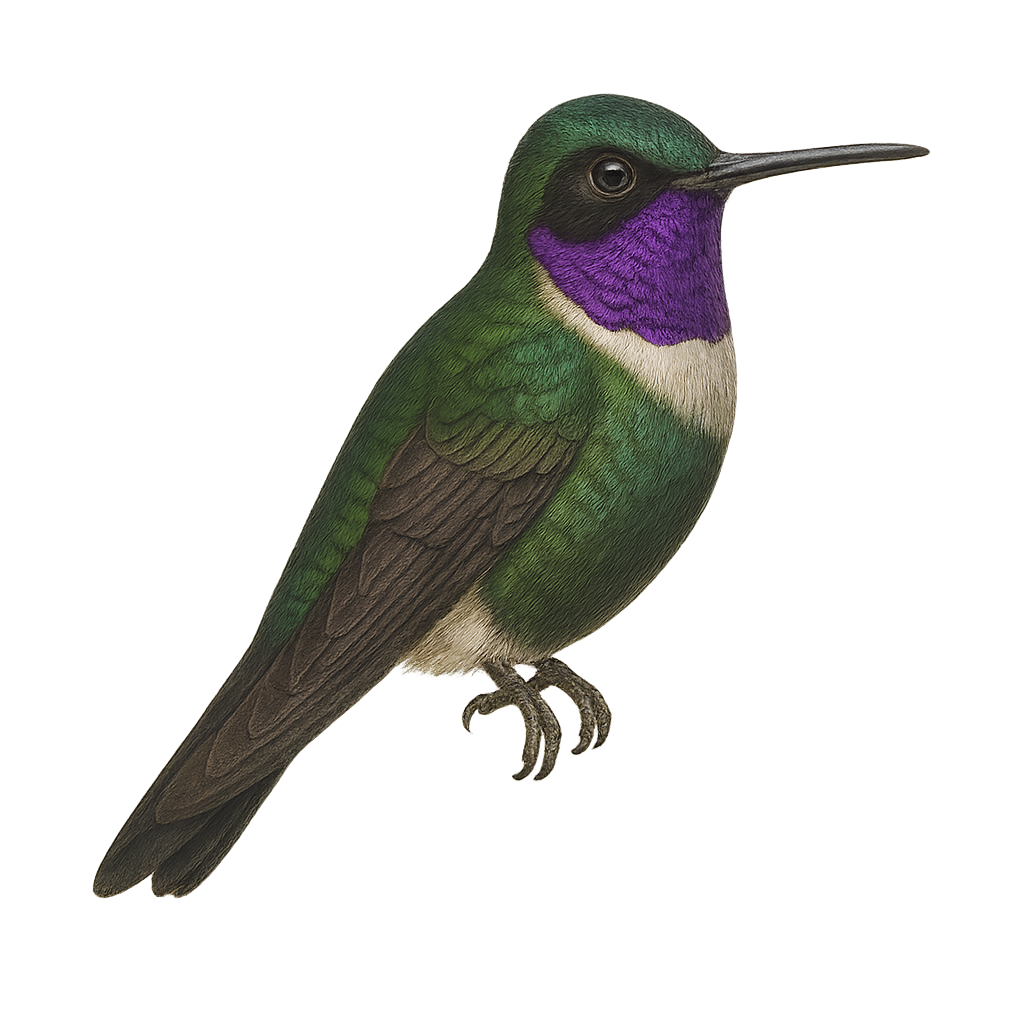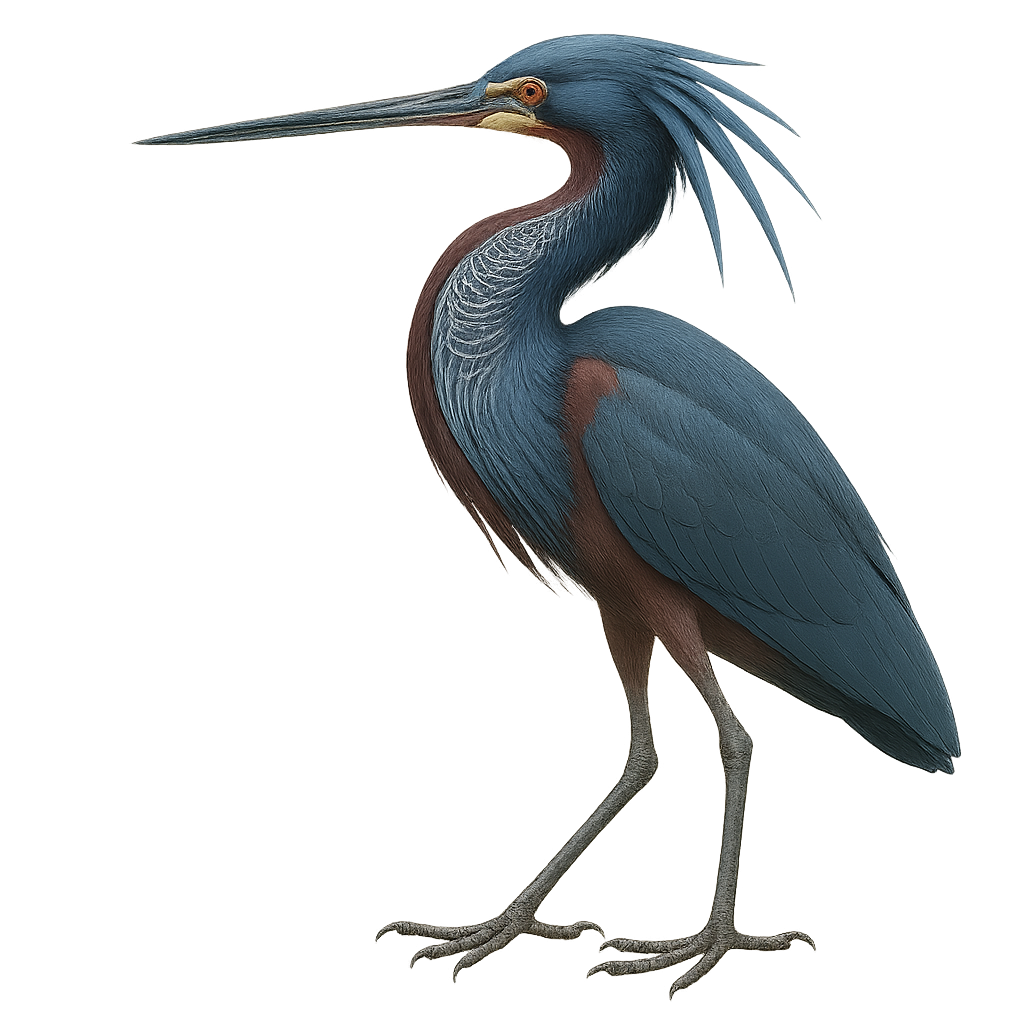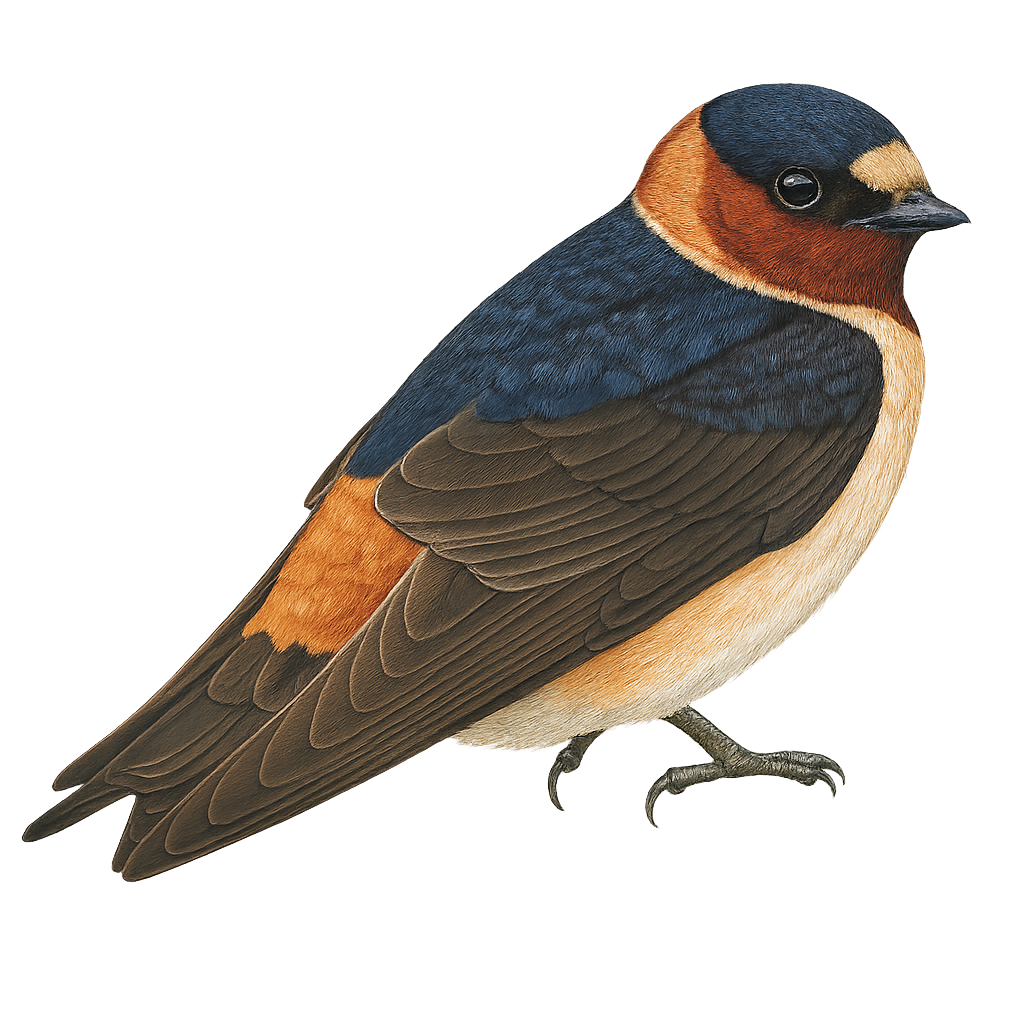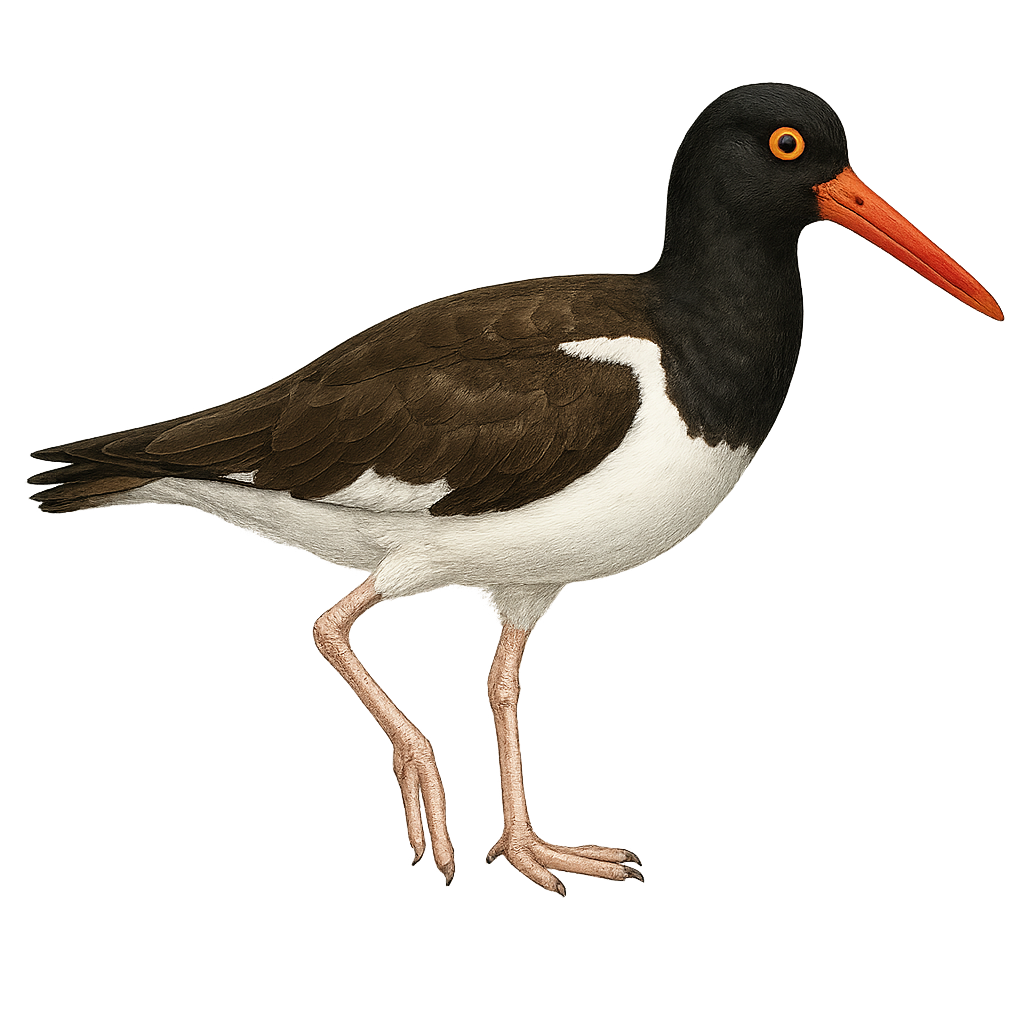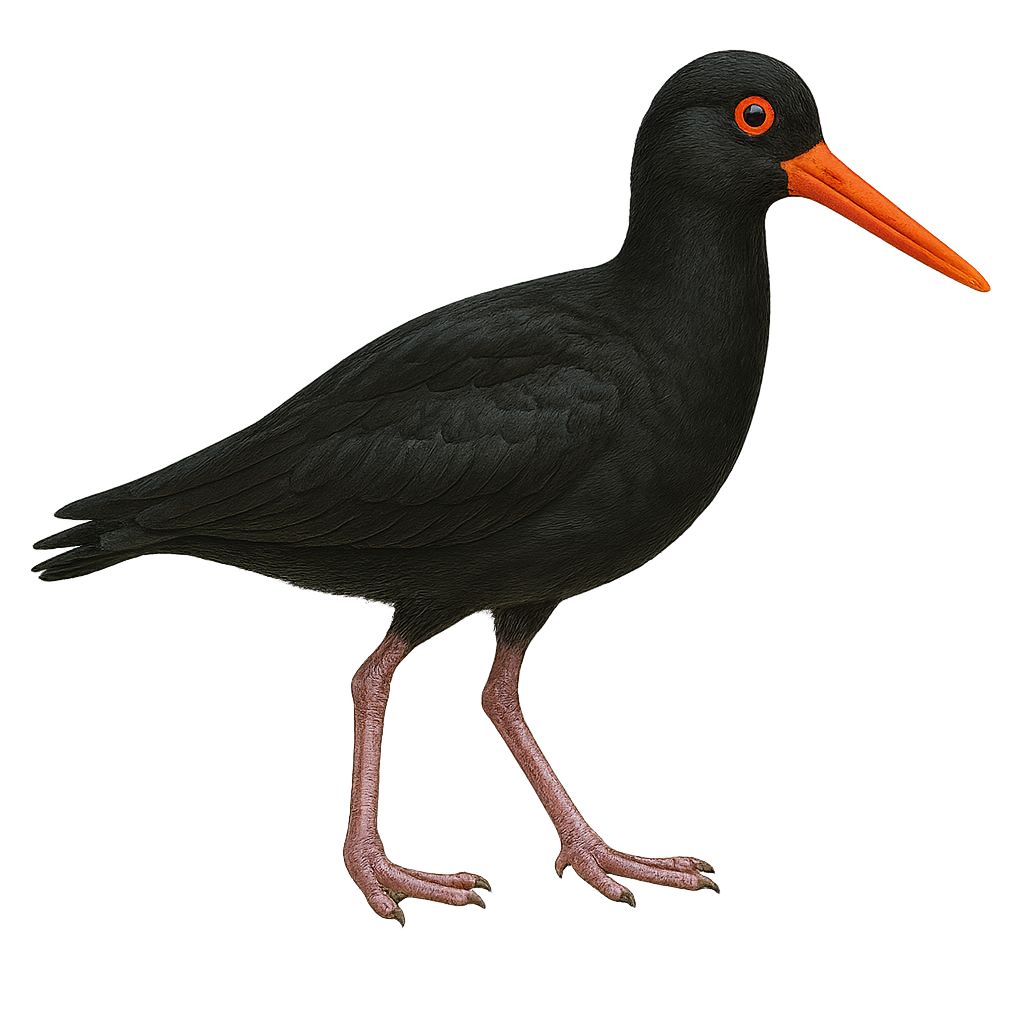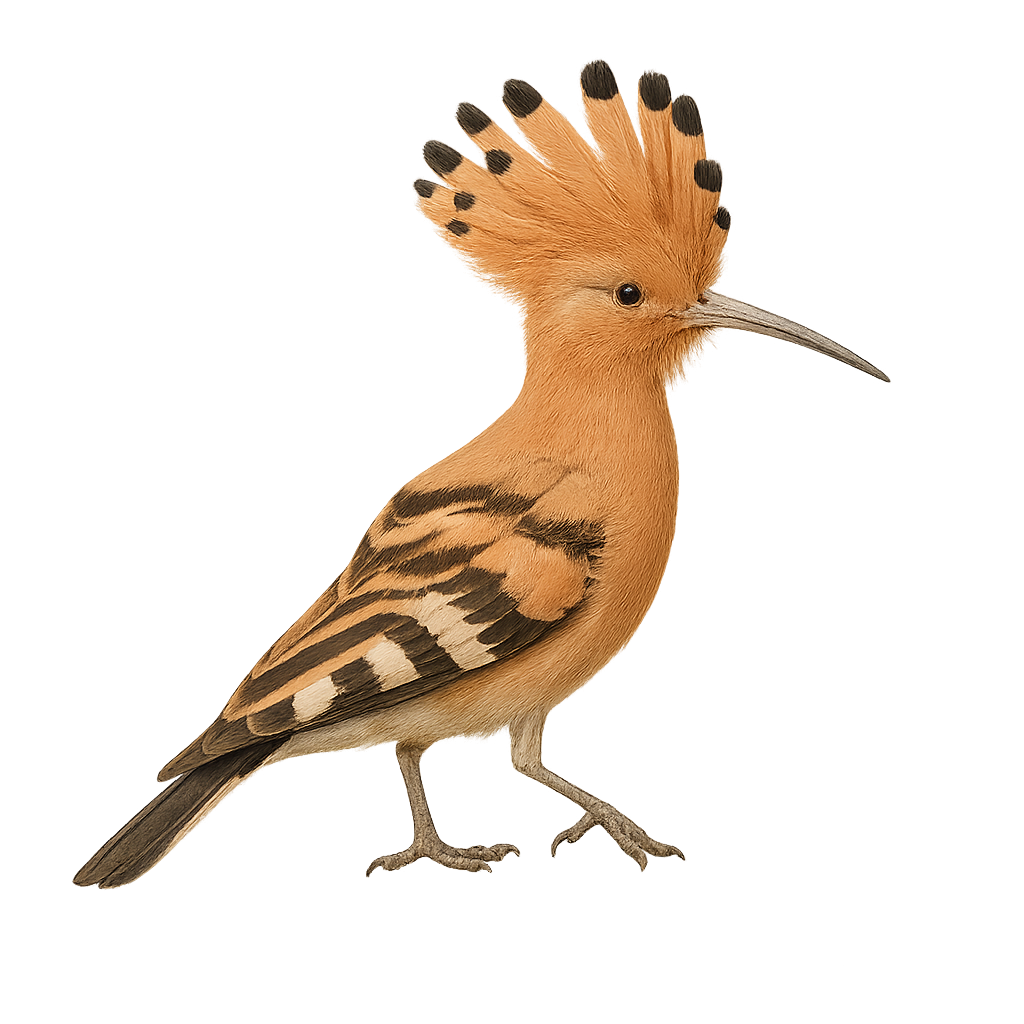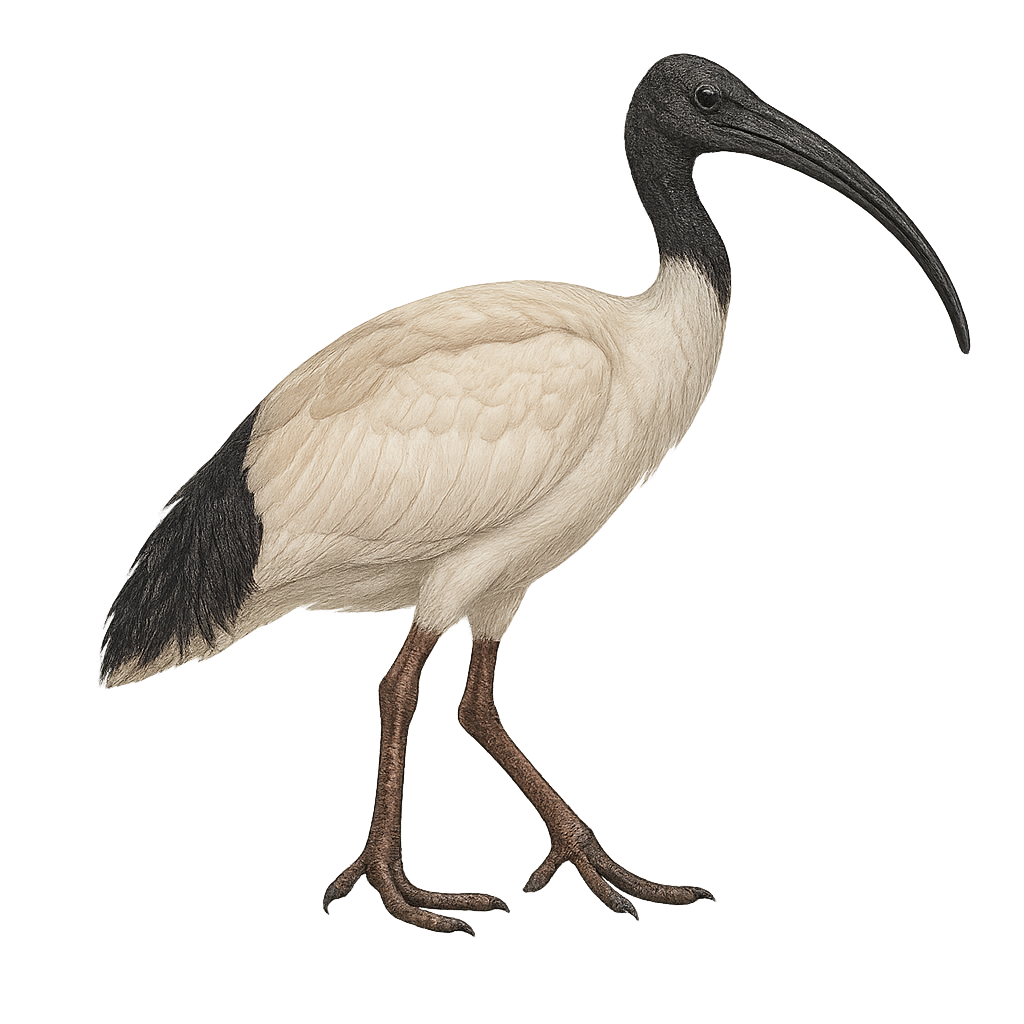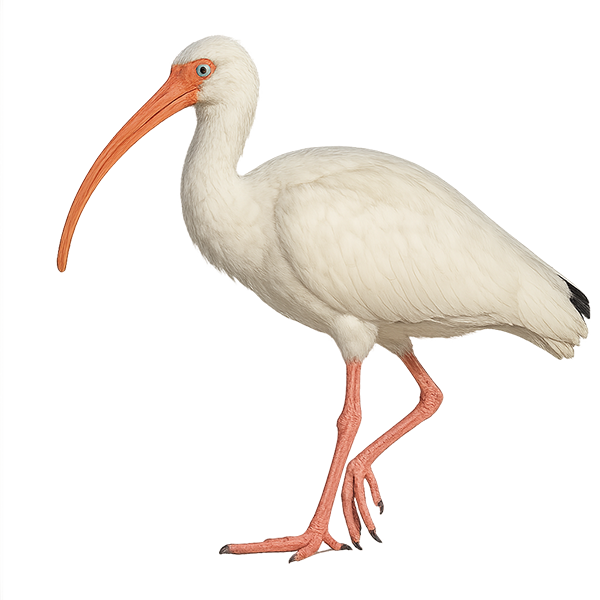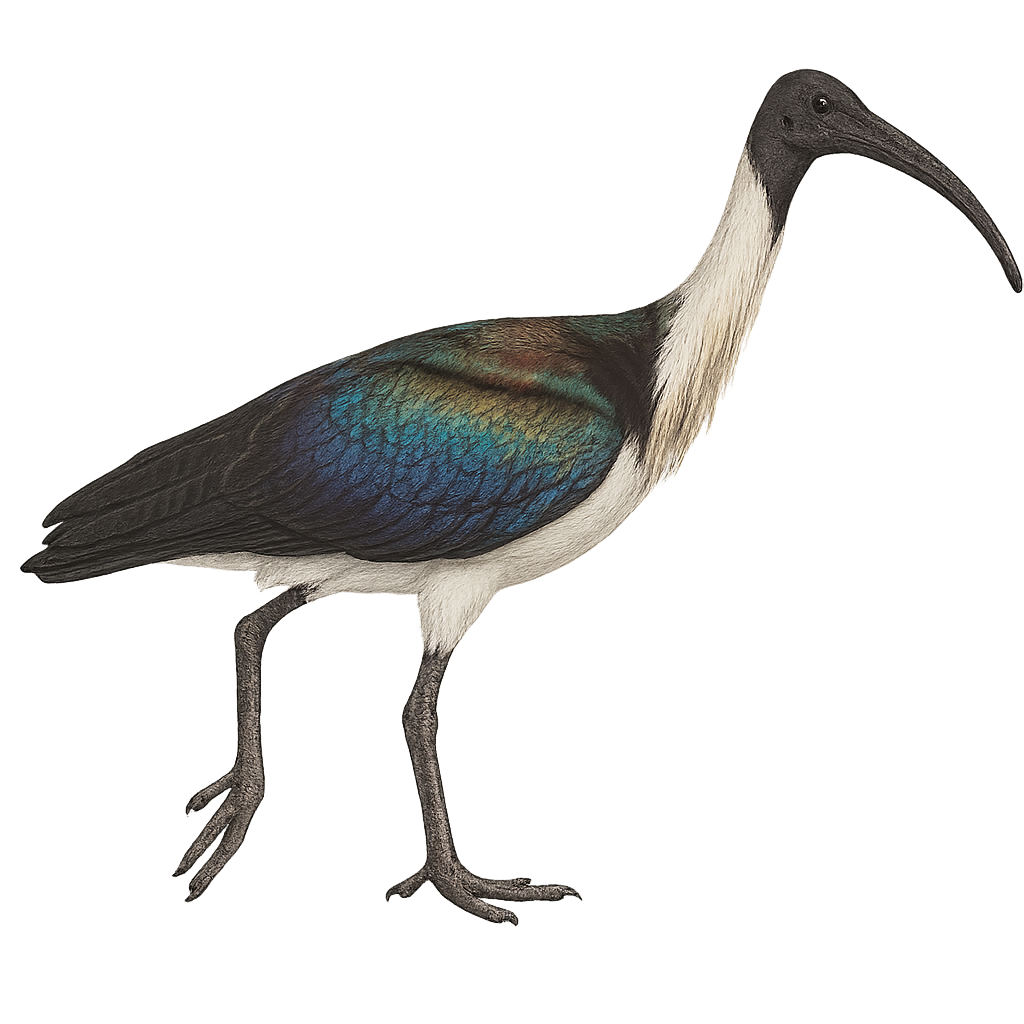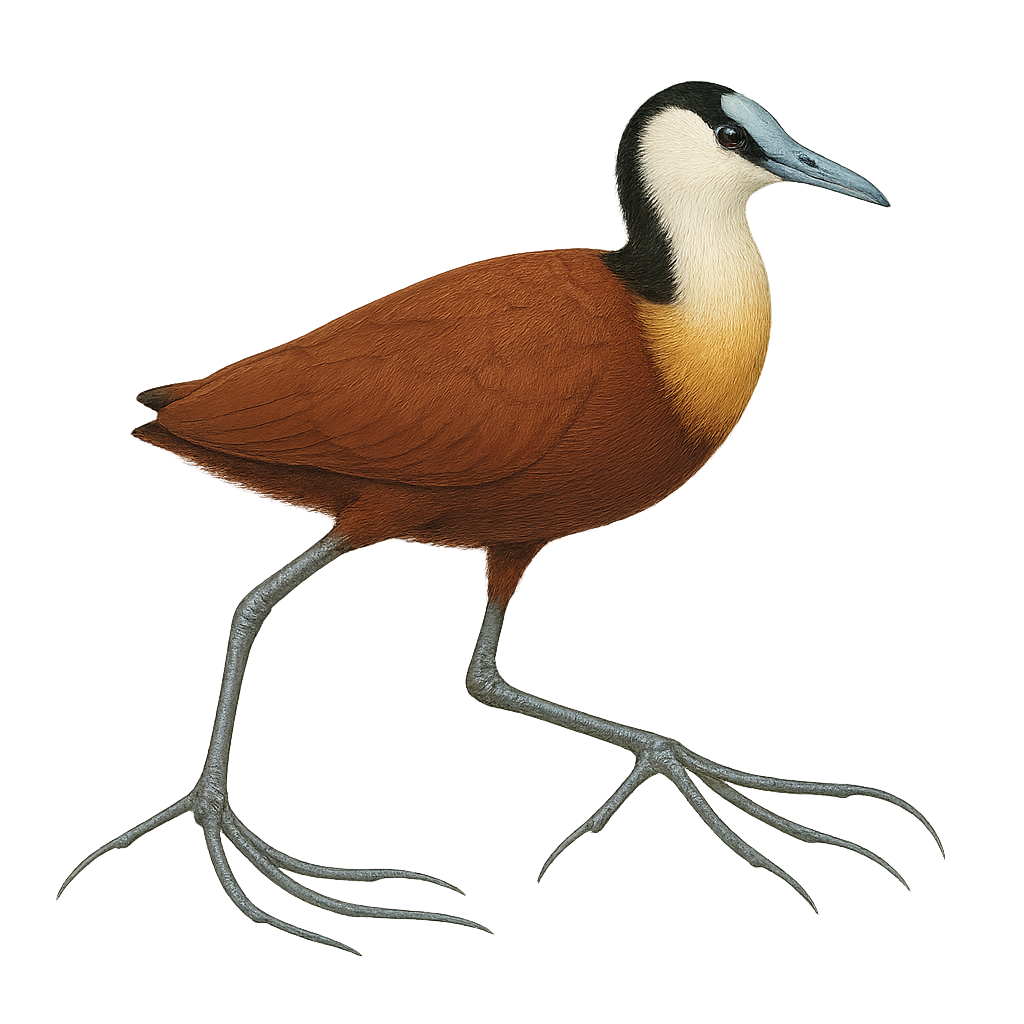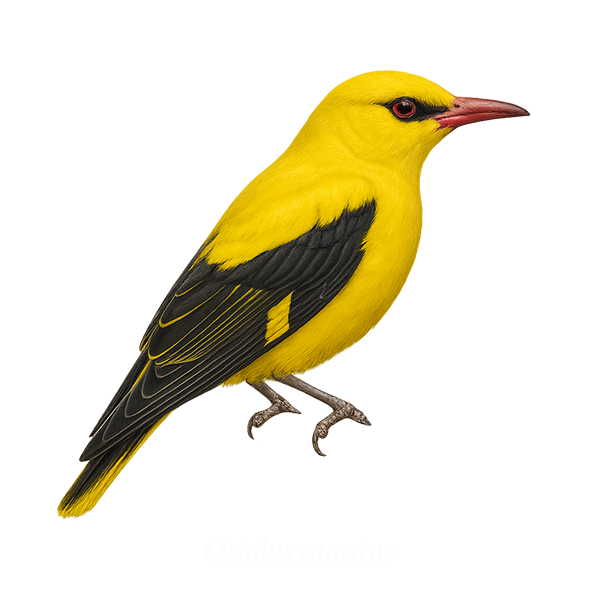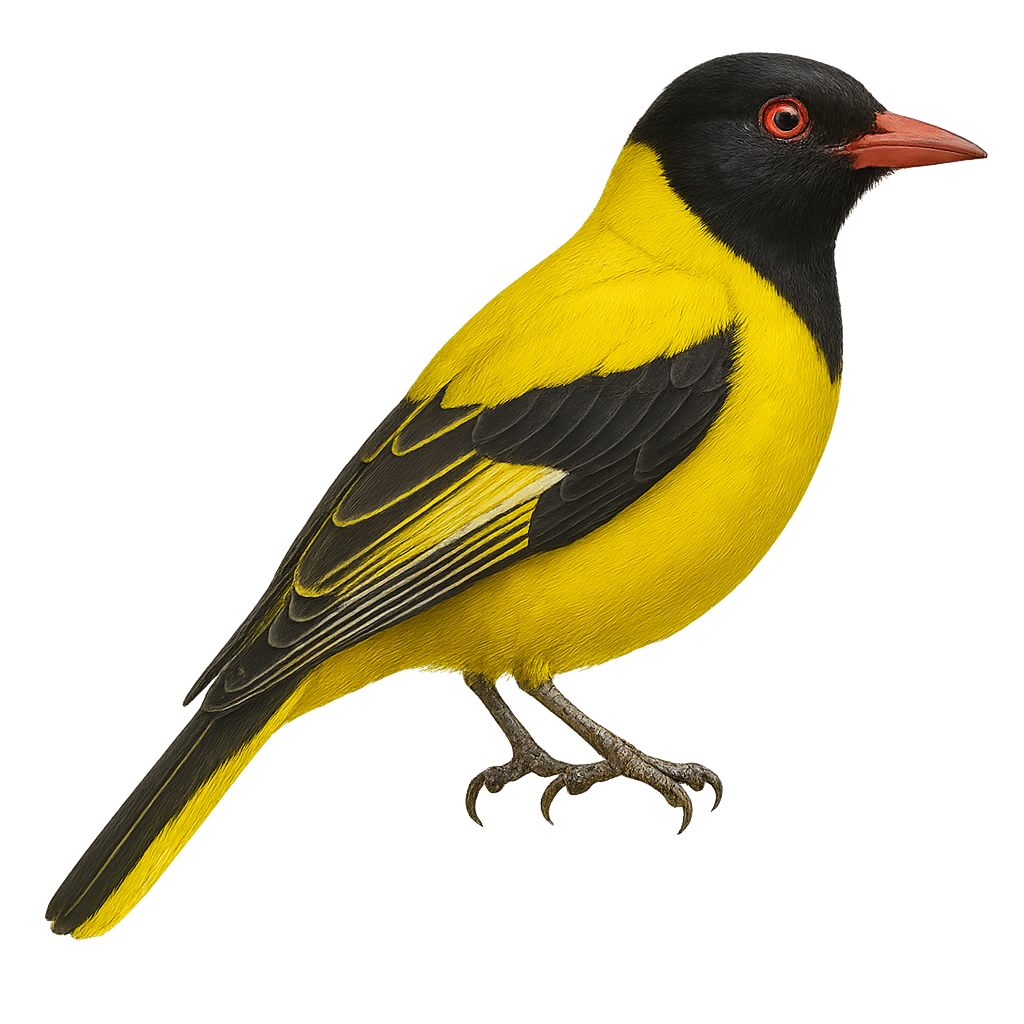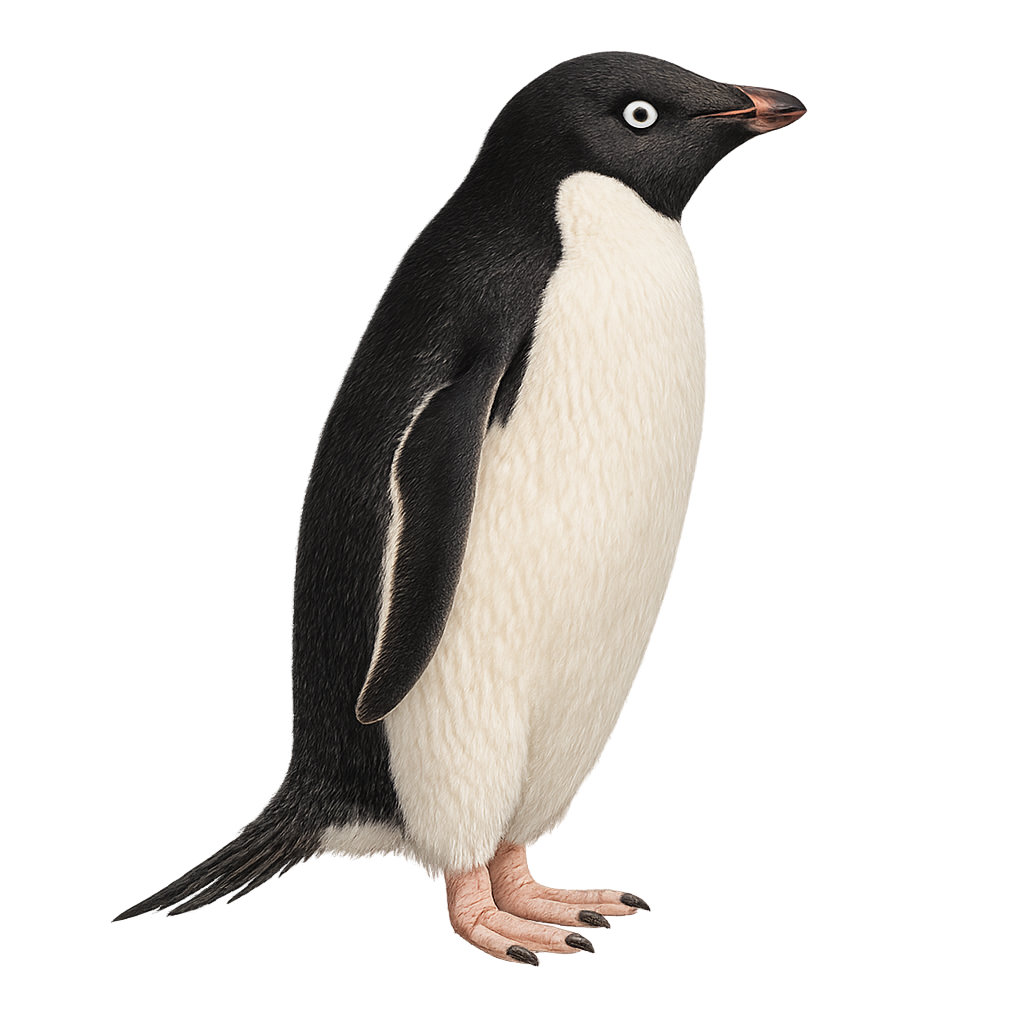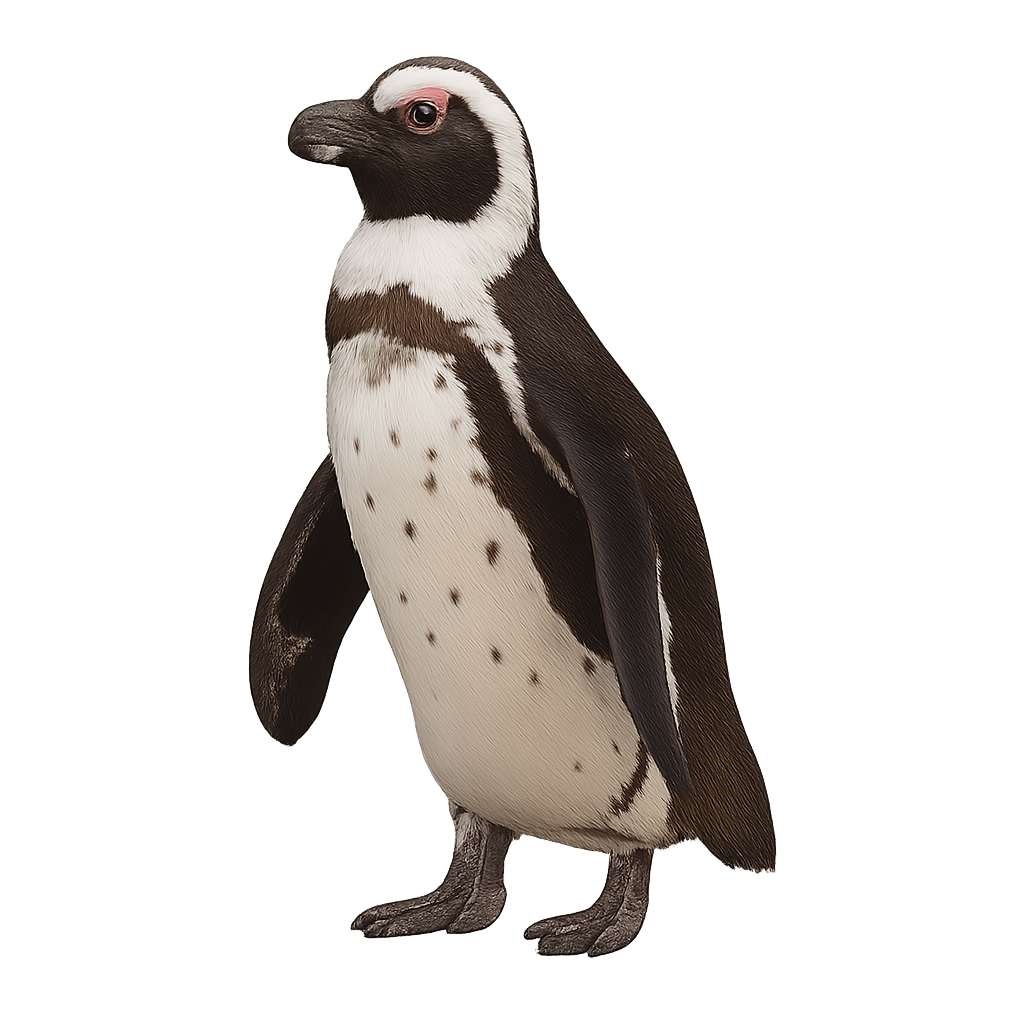The American Crow, scientifically known as Corvus brachyrhynchos, is a medium-sized bird, measuring about 40 to 50 cm in length with a wingspan of 85 to 100 cm. Its plumage is entirely black with metallic sheens under light. This bird is highly adaptable and can be found in various habitats, including forests, fields, and even urban areas. It is omnivorous, feeding on fruits, insects, small animals, and human waste. The American Crow is known for its remarkable intelligence, capable of using tools and solving complex problems. It usually lives in groups and communicates through a series of calls and caws.
The American Kestrel, or Falco sparverius, is the smallest falcon in North America. It is known for its colorful plumage, featuring shades of rufous, blue-gray, and black. Males have blue wings and a spotted chest, while females display more uniform tones. This raptor is famous for its ability to hover in place, scanning the ground for prey. It primarily feeds on small mammals, insects, and occasionally small birds. Adaptable, it inhabits various environments, from open fields to urban areas. Its presence is often marked by its sharp, piercing call.
The Anna's Flowerpecker is a small, colorful bird found primarily in the tropical and subtropical forests of Southeast Asia. This passerine is recognizable by its vibrant plumage, often adorned with shades of blue, green, and red. It primarily feeds on nectar, fruits, and insects, playing a crucial role in plant pollination. Its song is melodious and varied, making it easily identifiable for birdwatchers. Although generally solitary, it can sometimes be seen in small groups, especially during the breeding season.
The Australian Owlet-nightjar is a small, nocturnal bird belonging to the Aegothelidae family. It is identifiable by its grey-brown plumage, distinctive white eyebrows, and large eyes adapted for night vision. This bird is primarily endemic to Australia, inhabiting various forest types, including eucalyptus forests and open woodlands. It feeds mainly on insects, which it catches in flight or by foraging through foliage. The Australian Owlet-nightjar is known for its melodious song and varied calls, often heard at dusk and dawn. Although discreet, it is sometimes observed perched at the entrance of tree cavities, where it nests and rests during the day.
The Aplomado Falcon, Falco femoralis, is a sleek and slender raptor, recognizable by its distinctive plumage. It features a slate-gray back, a white belly, and a black band across the chest. Its wings are long and pointed, adapted for fast and agile flights. This falcon is primarily found in open grasslands, savannas, and semi-desert areas of Central and South America. A skilled predator, it mainly feeds on small birds, rodents, and insects. Although its habitat is vast, it is sometimes threatened by the loss of its natural environment. Its behavior is generally suspicious, but it can become accustomed to human presence in some areas.
The alpine warbler is a small passerine of 12–13 cm with olive-brown, faintly streaked plumage and buff flanks. It inhabits alpine heath, subalpine meadows and open coniferous woodland. It feeds mainly on insects and spiders captured in vegetation. During breeding, males sing in flight or from elevated perches to attract females.
The Andean flamingo is a rare species of flamingo that inhabits saline and alkaline lagoons of the high Andes plateaus, primarily in Argentina, Chile, and Bolivia. It is distinguished by its white plumage and pale pink hues, as well as its graceful silhouette. This species is threatened by habitat loss and human disturbance and is listed as a protected species. It primarily feeds on algae and small crustaceans found in saline waters.
The Australasian Gannet, or Morus serrator, is a striking seabird known for its brilliant white plumage, black-tipped wings, and pale blue bill. It primarily inhabits the coasts of Australia and New Zealand. This bird is famous for its spectacular dives, reaching speeds of 100 km/h to catch fish. Australasian Gannets are social birds, often seen in large colonies on rocky islands. They nest on cliffs or islets, usually laying a single egg. Although they are quite tolerant of human presence, it's essential to respect their space to avoid disturbing their natural behavior.
The Abbott's Booby, or Papasula abbotti, is a rare and iconic seabird found in the Indian Ocean, particularly on Christmas Island. It is recognizable by its striking white plumage contrasted with black wings and tail, and it has a robust, slightly curved beak. Unusually for a booby, it nests primarily in the trees of the rainforest. Its population is declining due to deforestation and human disturbances. The Abbott's Booby feeds mainly on fish and squid, which it captures by skillfully diving into the ocean. Conservation efforts are crucial to maintaining the ecological balance of its island habitat.
The American Coot is a medium-sized waterbird, easily identified by its slate-gray plumage and distinctive white bill, often marked with a red spot at the base. It inhabits lakes, ponds, and marshes across North America, feeding primarily on aquatic vegetation, insects, and small fish. Although often mistaken for a duck, it belongs to the rail family. It has strong legs and long lobed toes that enable it to swim and walk on floating vegetation. The American Coot is known for its territorial behavior, especially during the breeding season, when it vigorously defends its territory against intruders.
The Ascension Frigatebird, scientifically known as Fregata aquila, is an impressive seabird renowned for its ability to fly long distances without landing. It boasts a wingspan of up to 2.3 meters, allowing it to effortlessly glide over oceans. Its plumage is predominantly black with metallic sheen, and males display a bright red gular pouch that they inflate to attract females. These birds primarily nest on Ascension Island, where they form large colonies. They mainly feed on fish and squid, which they skillfully snatch from the water. Their lifestyle is closely tied to ocean currents and climatic conditions, making them vulnerable to environmental changes.
The Audouin's Gull, Larus audouinii, is a rare and elegant gull species primarily found in the Mediterranean basin. Recognizable by its pure white plumage, light gray wings, and bright red bill with a black tip, it stands out with its slender silhouette and graceful demeanor. This gull mainly nests on rocky islands and isolated coasts, forming dense colonies. It primarily feeds on fish, skillfully diving into the water to catch its prey. Although its population experienced a significant decline in the 20th century, conservation efforts have led to some stabilization. However, it remains vulnerable to human disturbances and environmental changes.
The Australasian Grebe, or Tachybaptus novaehollandiae, is a small waterbird found mainly in Australia and New Guinea. It is recognizable by its dark brown plumage, black throat, and short, pointed bill. During the breeding season, a bright yellow patch appears at the base of its bill. This grebe prefers freshwater bodies such as lakes and ponds, where it feeds on small fish, aquatic insects, and crustaceans. It is an excellent swimmer and diver, capable of staying underwater for extended periods to hunt its food. Although generally discreet, it can be seen swimming on the surface or hiding among reeds.
The Arabian Green Bee-eater, Merops cyanophrys, is a medium-sized, colorful bird, measuring about 28 cm in length. It is easily recognizable by its bright green plumage, pale blue cheeks, and vivid yellow throat. This elegant bird is often observed in flight, catching insects mid-air with its agile aerial maneuvers. It frequents open areas, savannas, and semi-arid regions, often near water. A migratory species, it breeds in southern Europe and western Asia, then migrates to sub-Saharan Africa for the winter. The Arabian Green Bee-eater is a sociable bird, often seen in groups, and nests in burrows dug into sandy banks.
The Asian Green Bee-eater, or Merops orientalis, is a vibrant and graceful bird, easily recognized by its bright green plumage, blue throat, and black eye stripe. Measuring about 23 cm in length, it has a slender, slightly curved beak, perfect for catching insects in flight. This bird is often seen in small groups, perching on exposed branches to watch for prey. It is particularly common in open regions, savannas, and agricultural areas. The Asian Green Bee-eater is a partial migrant, moving according to the seasons to find food resources. Its presence is an indicator of the health of local ecosystems.
The Heliangelus amethysticollis, or Amethyst-throated Sunangel, is a captivating small bird from the Trochilidae family. This hummingbird is distinguished by its striking violet throat, which beautifully contrasts with its metallic green plumage. It is primarily found in the humid forests of the Andes, at altitudes ranging from 1800 to 3000 meters. Its slender, slightly curved beak is perfectly adapted for feeding on flower nectar, which it gathers with remarkable agility. In addition to its nectarivorous diet, it also consumes small insects to supplement its nutrition. The Amethyst-throated Sunangel is a territorial bird, often observed vigorously defending its territory against other hummingbirds. Its breeding season generally extends from November to March, and the female builds a cup-shaped nest where she lays two eggs.
The Agami Heron, or Agamia agami, is a unique and fascinating heron known for its exceptionally colorful plumage and slender silhouette. This large bird, measuring about 66 to 76 cm in length, sports a plumage with varied hues ranging from deep blue to brown, with metallic reflections. Its neck is long and thin, often folded in an S-shape, and its beak is sharp, ideal for capturing aquatic prey. The Agami Heron is primarily observed in the humid tropical forests of Central and South America, where it frequents rivers and swamps. Discreet and solitary, it is often difficult to spot, preferring to move slowly and silently through dense vegetation.
The American Cliff Swallow, Petrochelidon pyrrhonota, is a small migratory bird belonging to the Hirundinidae family. It is easily recognizable by its distinctive white forehead, dark blue back, and beige belly. These swallows are often seen in large groups, nesting under bridges, ledges, and cliffs. They build gourd-shaped nests using mud and saliva. Their diet mainly consists of flying insects, which they catch in mid-air. They are highly social and communicate through various songs and calls. Their range extends from North America to South America, where they spend the winter.
The American Oystercatcher is a coastal bird known for its distinctive black and white plumage, bright red bill, and yellow-ringed eyes. It primarily inhabits sandy beaches, mudflats, and estuaries where it feeds mainly on bivalve mollusks, which it skillfully opens with its strong bill. This bird is often seen in small groups but can also be solitary. It is known for its loud, piercing calls, especially during the breeding season. The American Oystercatcher is a partial migrant, with some populations moving south in winter. Its presence is an indicator of healthy coastal ecosystems, although it is threatened by habitat loss and human disturbances.
The African Black Oystercatcher is a coastal bird endemic to the South African coastline, easily identified by its black plumage, bright red bill, and red-ringed eyes. It primarily inhabits sandy beaches and rocky shores, feeding on mollusks and crustaceans. This bird is monogamous, forming stable pairs that vigorously defend their territory. Nesting occurs on the ground, often near the sea, with both parents sharing incubation and chick-rearing duties. Although its population is stable, it remains vulnerable to human disturbances and predation by introduced species.
The African Hoopoe, or Upupa epops africana, is a captivating bird, easily identified by its distinctive crest and black-and-white plumage patterns. It primarily inhabits the savannas and wooded areas of sub-Saharan Africa. This bird feeds mainly on insects, which it captures with its long, slender beak. The African Hoopoe is often seen probing the ground for food and is known for its distinctive "hoo-hoo-hoo" call. While generally solitary, it can be observed in small groups during the breeding season. Its adaptability to various habitats makes it a resilient species, although habitat loss remains a potential threat.
The Australian White Ibis, or Threskiornis molucca, is a medium-sized bird easily recognizable by its white plumage contrasting with its black neck and head. Its long, curved beak is perfectly adapted for probing the ground in search of food. This bird is often seen in wetlands, marshes, and estuaries, but it has also adapted well to urban environments. Known for its gregarious behavior, it forms large colonies during the breeding season. Although its appearance may seem austere, the Australian White Ibis plays a crucial role in the ecosystem by controlling insect populations and cleaning up organic waste. Its ability to adapt to various habitats makes it a resilient species, although its interaction with humans can sometimes be a source of conflict.
The American White Ibis, Eudocimus albus, is an elegant and graceful bird found mainly in wetlands and coastal areas of the Americas. It is easily recognizable by its bright white plumage, long curved reddish bill, and red legs. Adults measure about 65 cm in length with a wingspan of 95 cm. They primarily feed on small aquatic invertebrates, which they capture by probing the mud with their bill. American White Ibises live in colonies and are often seen in large groups. Their flight is characterized by regular wing beats and gliding. Although they are mainly diurnal, they can be active at dawn and dusk.
The Australian Ibis, or Threskiornis spinicollis, is a large wading bird easily recognized by its bare black head, long down-curved bill, and straw-colored feathers hanging from its breast. Its plumage is strikingly contrasted: the back and wings are bluish-black with iridescent reflections, while the neck, nape, and underparts are white. It inhabits wetlands, flooded meadows, and farmlands across Australia and New Guinea. It feeds on frogs, insects, small reptiles, and worms. Often seen in flocks, it breeds in colonies in trees near water. The species is widespread and well adapted to open environments.
The African Jacana, Actophilornis africanus, is a water bird known for its ability to walk on lily pads due to its long toes and claws. It features a golden-brown chest and neck, contrasting with its dark brown back and black wings. The forehead is adorned with a pale blue frontal shield, and the beak is blue-grey. This bird is mainly found in the wetlands of sub-Saharan Africa, where it feeds on insects, mollusks, and seeds. The African Jacana is polyandrous, meaning the female mates with several males, who then take care of incubating the eggs and caring for the young. This species is an excellent indicator of the health of aquatic ecosystems.
The African Golden Oriole, or Oriolus auratus, is a medium-sized bird known for its striking plumage and melodious songs. It features bright yellow plumage with black wings, making it easily recognizable. This bird is primarily found in sub-Saharan Africa, where it inhabits open forests, wooded savannas, and bushy areas. The African Golden Oriole is a partial migrant, moving seasonally to find food resources. It feeds mainly on insects, fruits, and nectar. Its song is a soft whistle, often heard during the breeding season. Although its habitat is threatened by deforestation, it is currently listed as "Least Concern" by the IUCN.
The African Golden Oriole, scientifically known as Oriolus larvatus, is an elegant and colorful bird found primarily in sub-Saharan Africa. It is easily recognizable by its bright yellow plumage contrasted with a distinctive black head. This bird prefers wooded habitats and open forests, where it primarily feeds on fruits, insects, and nectar. The African Golden Oriole is a diurnal bird, most active in the morning and late afternoon. It is often seen alone or in small groups, and its melodious song is an indicator of its presence. Although generally discreet, it can be observed moving between trees in search of food.
The Atlantic Puffin is a seabird characteristic of the coasts of the North Atlantic, particularly around the British Isles, Greenland, Iceland, and parts of Canada. It measures about 30 cm in length, with a wingspan of 50 to 60 cm, and weighs between 300 and 500 g. It is distinguished by its black and white plumage and its colorful beak, which is bright orange with red and blue bands during the breeding season. Outside of the breeding period, the Atlantic Puffin loses its bright colors and its beak becomes paler. This bird is an excellent diver, primarily feeding on fish and crustaceans, which it catches by diving underwater with great agility. The Atlantic Puffin is also known for its social behavior, gathering in large colonies during breeding on cliffs or remote islands. Although it is widely distributed, the Atlantic Puffin is sensitive to human disturbances, such as disruptions caused by tourism, and ocean pollution, particularly oil spills.
The Adélie Penguin is an iconic bird of Antarctica, easily recognizable by its black and white plumage and elegant demeanor. Standing about 70 cm tall, it is perfectly adapted to life in the extreme conditions of its icy habitat. This penguin primarily feeds on krill, fish, and small crustaceans, which it skillfully captures in the frigid waters. Adélie Penguin colonies are often very dense, with thousands of individuals gathering during the breeding season. They build their nests with stones and typically lay two eggs. Parents take turns incubating the eggs and feeding the chicks. Although their population is currently stable, climate change and decreasing food resources pose potential threats to their future.
The African penguin, also known as the Jackass penguin, is a species of penguin found along the southwestern coast of Africa, primarily in South Africa and Namibia. It is easily recognizable by its black-and-white plumage and the large pink band around its eyes. This penguin is an excellent swimmer, feeding mainly on fish and crustaceans. While it is an iconic species of the region, it is endangered due to habitat loss, pollution, and overfishing.



